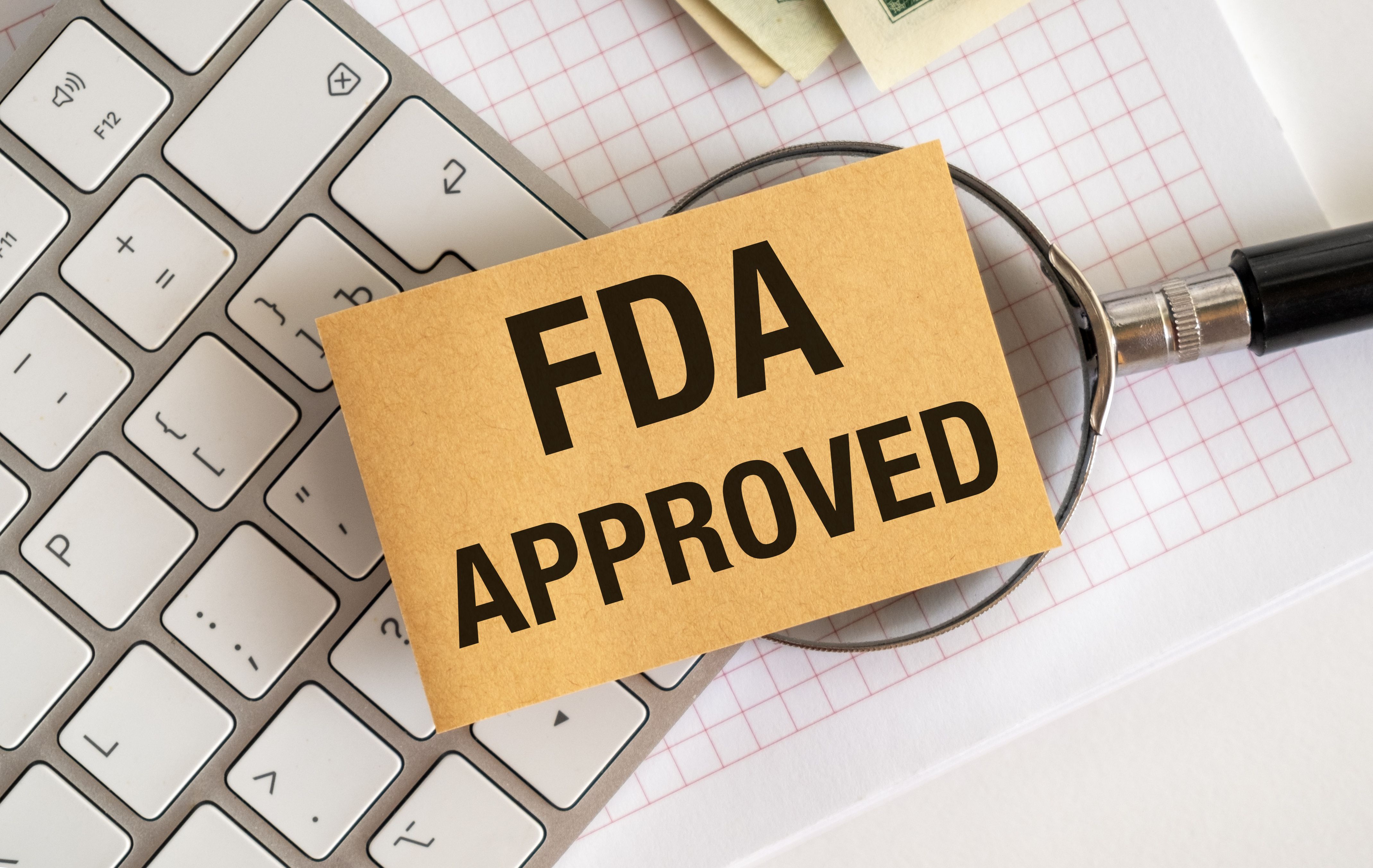- Center on Health Equity & Access
- Clinical
- Health Care Cost
- Health Care Delivery
- Insurance
- Policy
- Technology
- Value-Based Care
Ensartinib Receives FDA Approval for ALK-Positive Locally Advanced or Metastatic NSCLC
The FDA has approved ensartinib in adult patients with anaplastic lymphoma kinase (ALK)–positive locally advanced or metastatic non–small cell lung cancer (NSCLC) naive to ALK treatment.
The FDA has approved ensartinib in adult patients with anaplastic lymphoma kinase (ALK)-positive locally advanced or metastatic non–small cell lung cancer (NSCLC) naïve to ALK treatment. | Image Credit: Pawel - stock.adobe.com

Ensartinib (Ensacove) received an FDA approval for adult patients with anaplastic lymphoma kinase (ALK)–positive locally advanced metastatic non–small cell lung cancer (NSCLC), offering a new treatment option with improved progression-free survival (PFS).1
Manufactured by Xcovery Holdings Inc and Betta Pharmaceuticals, ensartinib’s new drug application was accepted by the FDA in March 2024.2 The approval is based on the results from eXalt3 (NCT02767804), a phase 3 randomized study that compared ensartinib with crizotinib among patients with ALK-positive NSCLC.3 Patients were enrolled if they had not received any form of prior treatment with an ALK inhibitor.
A total of 290 patients were randomized to receive either 225 mg of ensartinib once daily or 225 mg of crizotinib twice daily. PFS was the primary outcome, and overall survival (OS) was the main secondary outcome.
Ensartinib had significant improvements in PFS compared with crizotinib (HR, 0.56; 95% CI, 0.4-0.79; P = .0007),1 demonstrating a statistically superior median PFS compared with crizotinib (25.8 months vs 12.7 months).3 No statistically significant differences were reported for OS (HR, 0.88; 95% CI, 0.63-1.23; P = .457).1
Adverse events (AEs) associated with ensartinib occurred in no more than 10% of the patient population.3 Common AEs were mainly grade 2 or less, and included rash, elevated transaminase levels, pruritus, nausea, constipation, edema, anemia, vomiting, decreased appetite, and increases to blood alkaline phosphatase, blood creatinine, and g-glutamyltransferase.
Health care professionals recommend ensartinib dosage as 225 mg orally once daily, either with or without food, until disease progression halts or unacceptable toxicity is reached.1
Crizotinib is a first-generation ALK inhibitor, and the first ALK inhibitor to treat patients with NSCLC.4 Second-generation ALK inhibitors include ceritinib, alectinib, brigatinib, and ensartinib, while lorlatinib is considered third generation. Both second- and third-generation ALK inhibitors are more potent than crizotinib, and often associated with higher frequency of ALK-resistance mutations.5
The cost of ensartinib based on insurance coverage is not yet known. However, a study that analyzed a Chinese health care system found ensartinib demonstrated cost-effectiveness compared with crizotinib.6 Additionally, data showed ensartinib had reduced costs compared with ceritinib and brigatinib. Decreased total costs were also found for ensartinib compared with lorlatinib and alectinib.
Giovanni Selvaggi, MD, chief medical officer of Xcovery, described ensartinib as a “novel and distinct first-line therapeutic option to ALK-positive NSCLC patients.” This approval offers patients with ALK-positive NSCLC a new treatment option, enabling health care providers to personalize treatment plans more effectively.
Future research should investigate primary and acquired resistance mechanisms to optimize the sequencing of ensartinib and other ALK inhibitors in the first-line setting.
References
1. FDA approves ensartinib for ALK-positive advanced or metastatic non-small cell lung cancer. News release. FDA. December 18, 2024. Accessed December 19, 2024. https://www.fda.gov/drugs/resources-information-approved-drugs/fda-approves-ensartinib-alk-positive-locally-advanced-or-metastatic-non-small-cell-lung-cancer
2. US Food and Drug Administration (FDA) has accepted the new drug application (NDA) for ensartinib. News release. Business Wire. March 13, 2024. Accessed December 19, 2024. https://www.businesswire.com/news/home/20240313675039/en/U.S.-Food-and-Drug-Administration-FDA-Has-Accepted-the-New-Drug-Application-NDA-for-Ensartinib
3. Horn L, Wang Z, Wu G, et al. Ensartinib vs crizotinib for patients with anaplastic lymphoma kinase−positive non–small cell lung cancer: a randomized clinical trial. JAMA Oncol. 2021;7(11):1617-1625. doi:10.1001/jamaoncol.2021.3523
4. Cui W. What is the difference between ALK inhibitors? My Cancer Companion. Accessed December 19, 2024. https://www.mycancercompanion.com/content/what-is-the-difference-between-alk-inhibitors
5. Gainor JF, Dardaei L, Yoda S, et al. Molecular mechanisms of resistance to first- and second-generation ALK inhibitors in ALK-rearranged lung cancer. Cancer Discov. 2016;6(10):1118-1133. doi:10.1158/2159-8290.CD-16-0596
6. Luo X, Zhou Z, Zeng X, Peng L, Liu Q. Cost-effectiveness of ensartinib, crizotinib, ceritinib, alectinib, brigatinib and lorlatinib in patients with anaplastic lymphoma kinase-positive non-small cell lung cancer in China. Front Public Health. 2022;10:985834. doi:10.3389/fpubh.2022.985834
